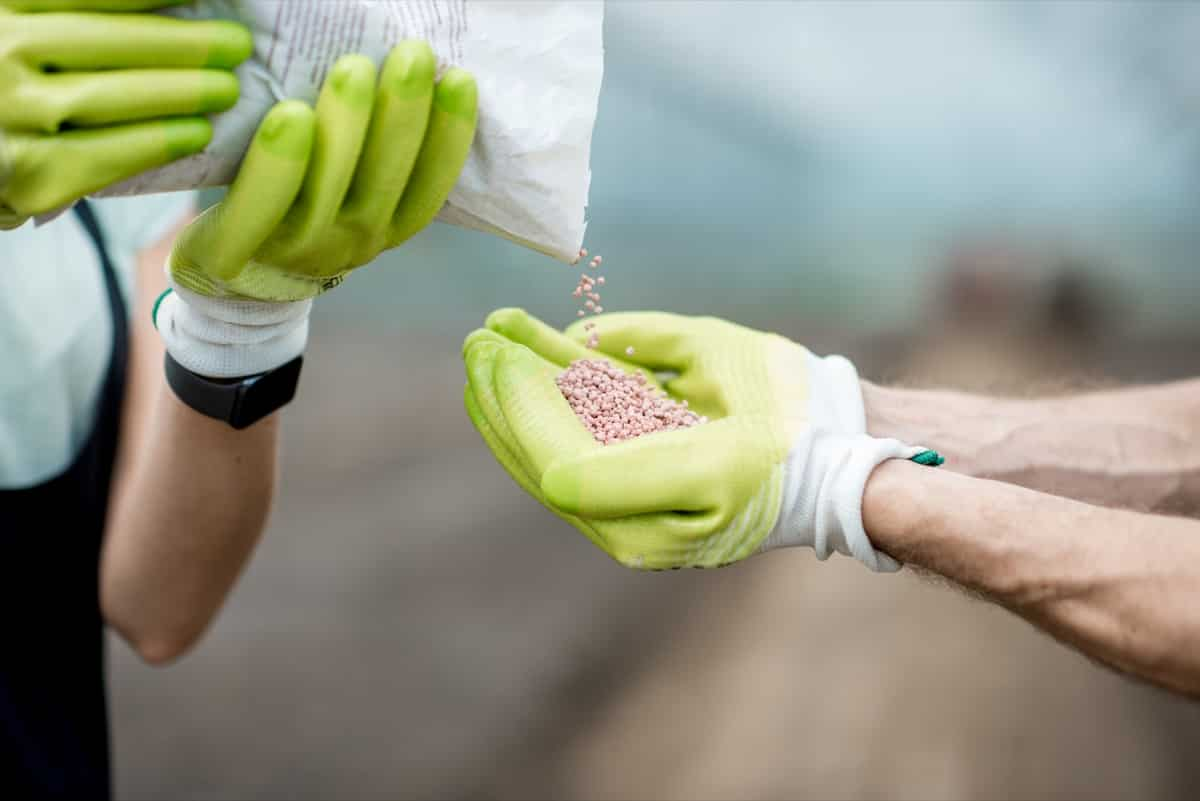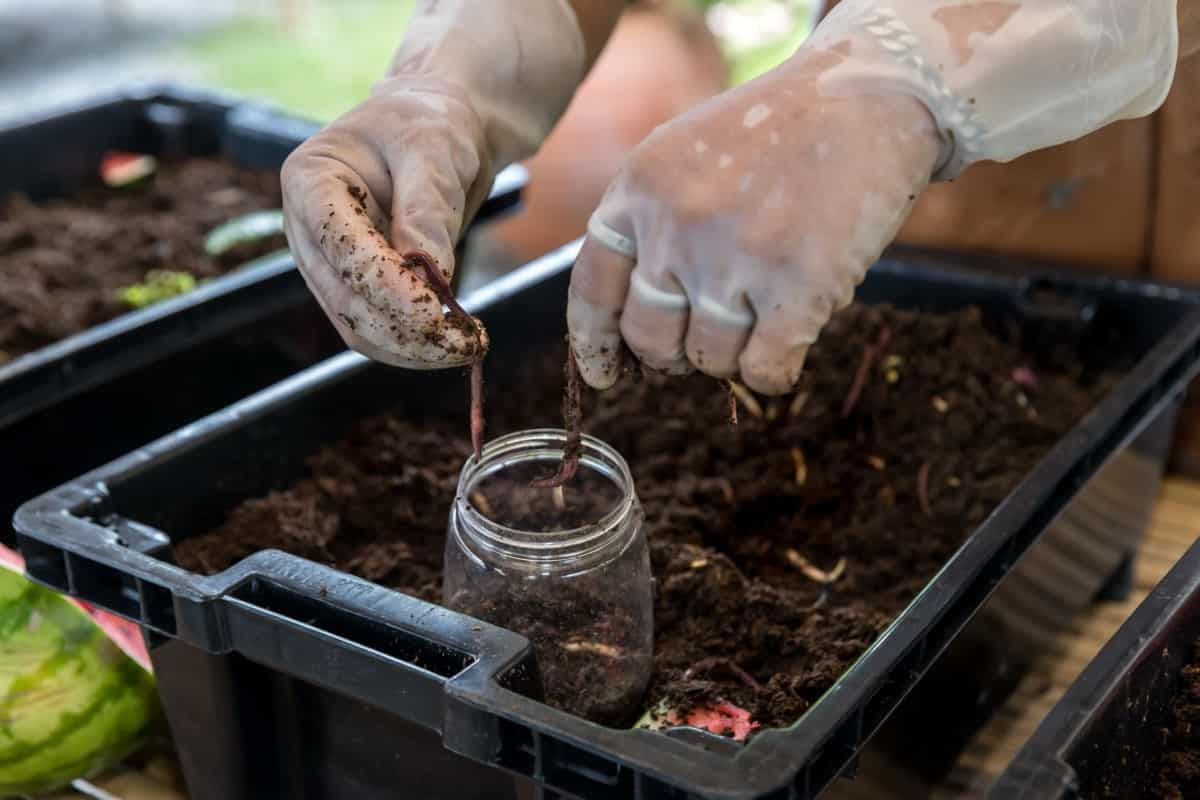Fertilizing potted jackfruit trees is essential for their healthy growth and fruit production. These tropical plants thrive when given the right nutrients. Whether you prefer organic, natural, or homemade options, understanding the appropriate NPK (Nitrogen, Phosphorus, Potassium) ratio and when and how to apply these fertilizers is key. This guide will help nurture your potted jackfruit tree, ensuring it thrives and bears delicious fruit.

Organic Fertilizers for Jackfruit Trees in Pots: Nurturing Your Plants Naturally
Organic fertilizers are a fantastic choice for potted jackfruit trees, promoting plant health while being environmentally friendly. Options like compost, well-rotted manure, and worm castings provide essential nutrients and improve soil structure. They release nutrients slowly, preventing over-fertilization. Apply organic fertilizers during the growing season, usually in spring and early summer. Spread them evenly around the tree’s drip line, thoroughly avoiding direct contact with the trunk and water.
Natural Fertilizers for Jackfruit Trees in Pots: for Environmentally-friendly Options
Choosing natural fertilizers for your potted jackfruit tree is an eco-conscious decision supporting plant health and the environment. Options like seaweed extract, fish emulsion, and bone meal offer essential nutrients without synthetic additives. These products are derived from renewable resources and are often sustainably harvested. Apply natural fertilizers during the growing season, primarily in spring and early summer, following package instructions.
Homemade Fertilizers for Jackfruit Trees in Pots: DIY Solutions for Optimal Plant Health
Creating homemade fertilizers for your potted jackfruit tree is a cost-effective and sustainable approach to plant care. Compost tea, banana peel fertilizer, and Epsom salt solutions are DIY options that can nourish your tree. Apply homemade fertilizers during the growing season, typically in spring and early summer, following recommended dilution rates. Be cautious not to allow concentrated solutions to contact the tree trunk.
Homemade fertilizers provide essential nutrients, reduce waste, and promote the recycling of kitchen and garden scraps. They can be tailored to your plant’s requirements, offering a personalized touch to your potted jackfruit tree’s care regimen, ensuring it flourishes and produces delicious fruit.
NPK Ratios and Their Importance in Selecting Fertilizers for Jackfruit Trees in Pots
NPK ratios, which represent the proportions of Nitrogen (N), Phosphorus (P), and Potassium (K) in fertilizers, play a pivotal role in selecting the right nutrients for potted jackfruit trees. These ratios influence various aspects of plant growth and development.
- Nitrogen (N) supports leafy green growth, vital for young jackfruit trees and overall vegetative health.
- Phosphorus (P) is essential for root development, flower formation, and fruit production, crucial stages in a jackfruit tree’s life.
- Potassium (K) promotes plant vigor, disease resistance, and fruit quality.
In case you missed it: How to Grow Jackfruit from Seed: Seed Germination, Spacing, Sowing, and Care

Choosing the correct NPK ratio ensures balanced growth and optimal fruit production. A balanced ratio of 10-10-10 or similar for jackfruit trees is generally suitable. However, the specific requirements may vary based on soil conditions and tree age.
Slow-release Fertilizers: Enhancing Nutrient Availability for Jackfruit Trees in Pots
Slow-release fertilizers are excellent choices for potted jackfruit trees, as they offer consistent and gradual nutrient availability over an extended period. These fertilizers release nutrients slowly, reducing the risk of over-fertilization and nutrient wastage. Slow-release fertilizers are typically available in granular or pellet forms, containing nutrients like Nitrogen, Phosphorus, and Potassium (NPK).
The controlled release of these nutrients ensures the tree receives a steady supply, promoting balanced growth and fruit development. Applying slow-release fertilizers simplifies maintenance, as you don’t need to fertilize as frequently. Additionally, it minimizes the risk of nutrient leaching, which can harm the environment.
pH Levels and Fertilizer Selection for Jackfruit Trees in Pots: For Balanced Soil Environment
Maintaining the right pH level in the soil is crucial for the healthy growth of jackfruit trees in pots. Jackfruit trees generally prefer slightly acidic to neutral soil with a pH level range of 6.0 to 7.0. Maintaining this balanced pH environment is essential for efficient nutrient uptake and plant health. When selecting fertilizers for potted jackfruit trees, it’s important to consider their impact on soil pH. Some fertilizers can alter the soil’s pH, potentially making it more acidic or alkaline. Choose pH-neutral fertilizers or slightly acidic to maintain the optimal pH range.
Organic fertilizers like compost and well-rotted manure often have a neutral pH and help improve soil structure while nourishing the tree. Natural options like seaweed extract and fish emulsion are also typically pH-friendly. If your soil becomes acidic or alkaline due to repeated fertilizer applications, you can use pH-adjusting amendments like lime to raise pH or sulfur to lower it gradually.
The Importance of Timing: When to Apply Fertilizer to Jackfruit Trees in Pots
Timing is crucial when fertilizing jackfruit trees in pots. Start fertilizing young trees when they’re 2-3 months old using a balanced, slow-release fertilizer. Add fertilizer every six weeks during the growing season (spring and summer). However, reduce or stop fertilization during the fall and winter to mimic the tree’s natural growth cycle. Over-fertilization can cause excessive vegetative growth and weaken the tree. Proper timing ensures that the tree gets the nutrients it needs without the risk of damage, promoting healthy growth and bountiful jackfruit production.
How to Apply Fertilizer to Jackfruit Trees in Pots: Techniques for Maximum Effectiveness
- Fertilize at the Right Time: Begin fertilizing when the tree is 2-3 months old, during the growing season (spring and summer). Reduce or stop fertilization in the fall and winter to mimic the tree’s natural cycle.
- Apply Evenly: Sprinkle the fertilizer evenly around the pot’s surface, keeping it at least a few inches away from the trunk to prevent burning. Alternatively, you can mix the fertilizer with the topsoil.
- Water Properly: After applying fertilizer, water the tree thoroughly to help nutrients penetrate the soil and reach the roots.
- Monitor for Signs of Over-Fertilization: Watch for symptoms like yellowing leaves or leaf burn, which can indicate over-fertilization. Adjust the dosage accordingly.
- Maintain a Regular Schedule: Stick to a consistent fertilization schedule, typically every six weeks during the growing season.
Water-soluble Fertilizers for Potted Jackfruit Trees
- Choose the Right Formula: Opt for a water-soluble fertilizer formulated for fruit-bearing trees. Look for a balanced NPK (nitrogen-phosphorus-potassium) ratio, such as 10-10-10.
- Dilute Properly: Follow the package instructions to mix the fertilizer with water at the recommended dilution rate. Usually, it’s about 1-2 tablespoons of fertilizer per 4 liters of water.
- Fertilize During the Growing Season: Apply the water-soluble fertilizer every six weeks during the active growing season, typically spring and summer. Reduce or halt applications during the fall and winter when the tree is dormant.
- Water Thoroughly: After applying the diluted fertilizer, water the pot generously to help distribute the nutrients to the root zone.
- Avoid Foliage Contact: Keep the fertilizer off the tree’s leaves to prevent burn. Direct the solution toward the base of the plant.
- Monitor and Adjust: Keep an eye on your tree’s health. If you notice any signs of over-fertilization (like leaf burn or excessive vegetative growth), reduce the frequency or concentration of fertilizer.
In case you missed it: 1-Acre Jackfruit Cultivation Cost and Profit Analysis: Project Report and Economics

Table for Fertilizing Potted Jackfruit Trees: Organic, Natural, Homemade, NPK Ratio And When to Apply
| Type of Fertilizer | Fertilizer | When to Apply |
| Organic | Compost, Worm casting | Spring and Early Summer |
| Natural | Seaweed extract, Bone meal | As side dressing |
| Homemade | Banana Peels, Epsom Salt | As side dressing |
| NPK ratio | 10-10-10 | Three splits/ season |
| Water soluble | Fish Emulsion, Compost Tea | During active growth |
| Slow release | In the form of Spikes | During active growth |
Conclusion
Fertilizing potted jackfruit trees is essential for their health and fruit production. Whether using organic or synthetic options, understanding the NPK ratio is crucial. Apply fertilizers during the growing season, following recommended guidelines. Proper timing, application techniques, and monitoring ensure these trees thrive and bear abundant, flavorful fruit.
- Feed Your Flock for Less: Top 10 Tips to Save on Chicken Feed
- Ultimate Guide to Ossabaw Island Hog: Breeding, Raising, Diet, and Care
- Hatching Answers: The Top 10 Reasons Your Chickens Aren’t Laying Eggs
- Eggs and Economics: Breaking Down the Cost of Raising Backyard Chickens
- Defend Your Greens: Proven Methods to Keep Iguanas Out of Your Garden
- Ultimate Guide to Cinnamon Queen Chicken: A Comprehensive Guide for Beginners
- Ultimate Guide to California Tan Chicken: Breeding, Raising, Diet, Egg-Production and Care
- Ultimate Guide to Marsh Daisy Chicken: Breeding, Raising, Diet, and Care
- 10 Types of Chicken Farming Businesses You Can Start for Profits